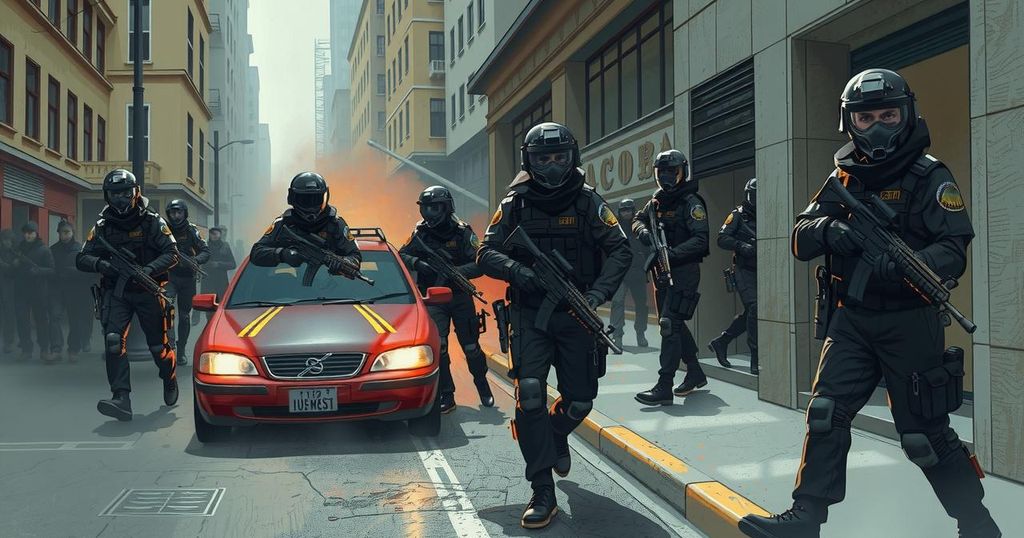Thawra Exposes Iranian Interference in Syria via Hezbollah Cells

On March 28, 2025, the Syrian newspaper Thawra reported a crackdown on Hezbollah cells by Syrian security forces in Sayyidah Zainab, amid rising tensions between Tehran and Damascus. The Syrian Ministry of Defense accused Hezbollah of infiltration, leading to clashes resulting in fatalities. Tehran’s direct military role and use of proxies like Hezbollah continue to be contentious, impacting regional stability and security.
A report by the Syrian newspaper Thawra, dated March 28, 2025, reveals a significant security operation by the Syrian Ministry of Interior against Hezbollah cells in the Sayyidah Zainab area of Damascus. The Rural Damascus Security Directorate announced on March 27 that the arrested individuals were allegedly plotting destabilizing “criminal operations”. Images of the security personnel apprehending three suspects were made public by Syrian media.
Tensions between the Iranian regime and Syrian officials have intensified, as the Syrian Ministry of Defense accused Hezbollah members of infiltrating its territory, resulting in the deaths of three soldiers from the new Syrian army. This incident highlights the growing concern over Tehran’s influence in Syria, ongoing since the conflict’s inception in 2011.
The report from Thawra indicates that Iranian involvement in Syria encompasses both direct military action and the use of proxy forces, notably Hezbollah. The group played a vital role in the 2013 battle of Qusayr, with the Iran’s Quds Force, led by the late Qassem Soleimani, significantly supporting the Assad regime through various military and intelligence operations.
Beyond Hezbollah, the Iranian Revolutionary Guard Corps (IRGC) has reportedly operated in Syria since the conflict began. By March 2017, it was estimated that the IRGC had suffered over 2,100 casualties. Additionally, Thawra accuses Iran of assisting Assad’s regime with chemical weapon deployments, particularly during the devastating 2013 Ghouta attacks leading to numerous civilian fatalities.
The border between Syria and Lebanon has evolved into a crucial route for Hezbollah’s illicit operations, including arms and narcotics trafficking, purportedly facilitated by Iranian backing. Reports suggest that such conflicts have escalated in recent months, highlighting Hezbollah’s involvement in cross-border activities as well.
In conclusion, the Thawra report underscores the Iranian regime’s persistent interference in Syria via direct military engagement and proxy organizations such as Hezbollah. The recent crackdown on Hezbollah cells signals ongoing tensions between Tehran and Damascus, reflecting concerns over Iranian influence and regional security. Since 2011, the Iranian clerical regime has mobilized IRGC forces, along with the Zeynabiyoun and Fatemiyoun brigades, under the pretense of protecting the Sayyidah Zainab shrine, despite claims that the new Syrian government now fulfills the protection role after the Assad regime’s decline.
In summation, the growing security operations against Hezbollah cells in Syria highlight the deteriorating relations between Iran and Syrian authorities. With Tehran’s continued military presence and support to proxy forces, Iran’s influence remains a critical focus in discussions on regional security and stability. The ongoing conflicts along the Syria-Lebanon border further exacerbate these tensions, illustrating the complexity of Iranian involvement in the region.
Original Source: www.ncr-iran.org








